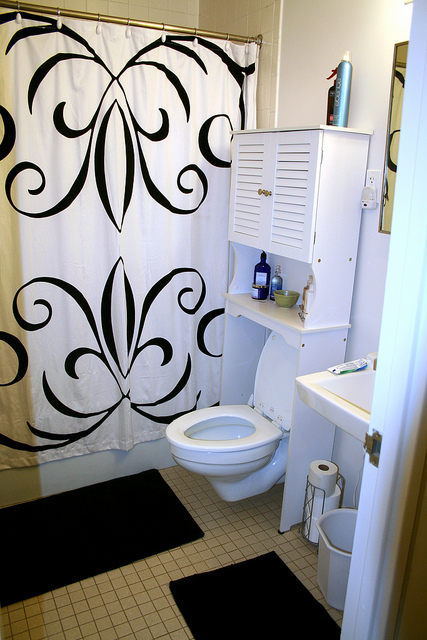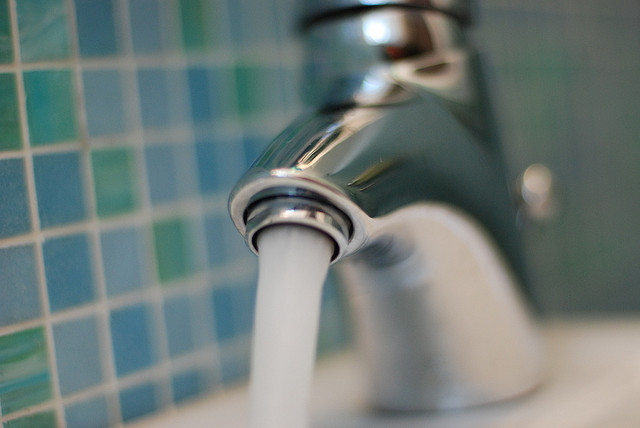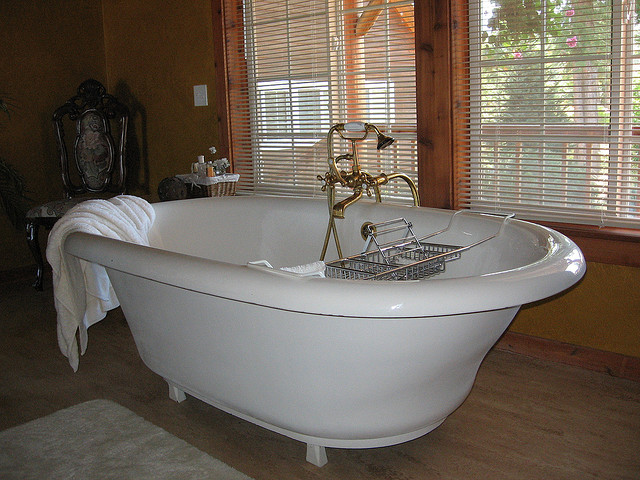In our initial post we promised that living a greener lifestyle doesn’t have to be complicated or expensive. In fact, sometimes living a more eco-friendly lifestyle can put a few extra bucks in your pocket. We wanted to begin the series with three steps that anyone can do today that will also help reduce your living expenses. So let’s head to your bathroom to find three simple ways to live greener and reduce your water bill.
Turn Off the Water While Brushing Your Teeth
You’ve heard it before. We all have. In fact, it was nearly two decades ago that my little boy and I sang “Brushing My Teeth” with Barney the purple dinosaur.
“I never let the water run. No, I never let the water run.”
And we didn’t. For about two weeks. Then we were right back to our water-wasting ways.
Maybe you’ve done the same thing, too. We know it’s the right thing to do, but taking the time to turn the faucet off and on is so… inconvenient. So we don’t. We let the water run because it’s quicker and easier. But have you ever wondered exactly how much water you’re wasting when you let the water run as opposed to wetting your brush and then turning off the faucet?
According to Earthday.org we waste two to four gallons of water when we let the water run while brushing our teeth. If we turn the facet off after wetting our brush, we only use about one gallon. Now, multiply that waste by the number of times you brush your teeth each day. Then by the number of people in your household. If you’re running hot water, you’re also wasting the energy required to heat the water. The costs of not making the eco-conscious choice quickly adds up.
It takes a bit of getting used to, but helping the environment (and keeping a little extra cash in your pocket) are worth the effort. The same advice applies to running the water while shaving.
It’s a Toilet, Not a Trash Can
 When getting ready in the morning, it’s typical to use a facial tissue, dental floss, or cotton balls, chuck the item in the toilet, then flush. I did this for years and never really gave any thought to it. But, let’s put on our Green Living Made Simple goggles and replay this scene.
When getting ready in the morning, it’s typical to use a facial tissue, dental floss, or cotton balls, chuck the item in the toilet, then flush. I did this for years and never really gave any thought to it. But, let’s put on our Green Living Made Simple goggles and replay this scene.
When we toss items like these in the toilet and flush, we are essentially using the toilet as our trash can. We do this despite the fact that most of us have to reach over the trash can to do it. I’ll admit, the thought of never having to see the offending item again, is nice. But, let’s consider how much water we’re using for this convenience. Each time you use your toilet as a garbage can you use five to seven gallons of water unnecessarily. This simple act wastes even more water than allowing the water to run while brushing your teeth. If you do it repeatedly throughout the day, the costs of this convenience add up rather quickly.
If you have a septic tank, the problem is compounded. Your tank will fill more quickly. This will also incur additional costs. So, when it comes to cotton balls, facial tissues, etc. do the environment, your wallet, and your septic tank a favor, don’t use your toilet as a trash can. Keep a small garbage can beside the toilet and put it to good use. Your wallet will thank you.
Take a Shower Instead of a Bath. Just Don’t Stay in There All Day.
I was surprised to learn that showers use far less water than taking a bath does. This is particularly the case if you have a nice, big, garden tub like we do. You likely paid extra for the luxury of having a big soaking tub. So we’re certainly not going to suggest that you don’t use it. Still, being aware of the higher water usage may make you rethink how often you fill the tub.
It takes about 70 gallons of water to fill a bathtub.
Reduce the water level by an inch or two when taking a bath and you’ll reduce you water usage by two gallons or more. Whenever possible, opt for a shower instead. A four-minute shower uses up to forty gallons of water. Shave a minute or two off your shower time and you’ll see additional savings. According to the City of Spokane Public Works Utilities, you can save up to 700 gallons of water per month by doing so.
Today we examined just a few of the ways green living can save you money in the bathroom. Next week, we’ll share three ways to reduce water usage in the kitchen and trim your water bill even more. Be sure not to miss next week’s post by subscribing at the top of the right sidebar or by using the box below.


